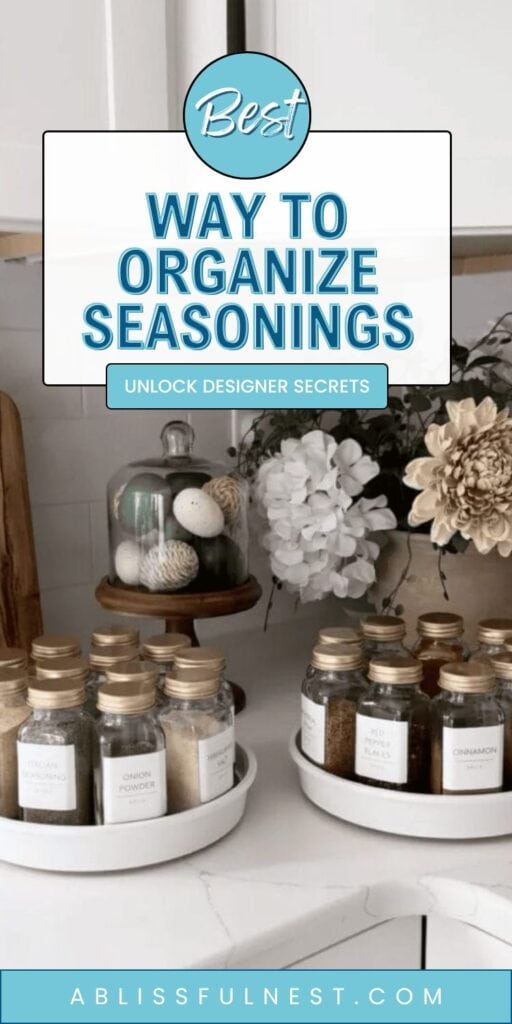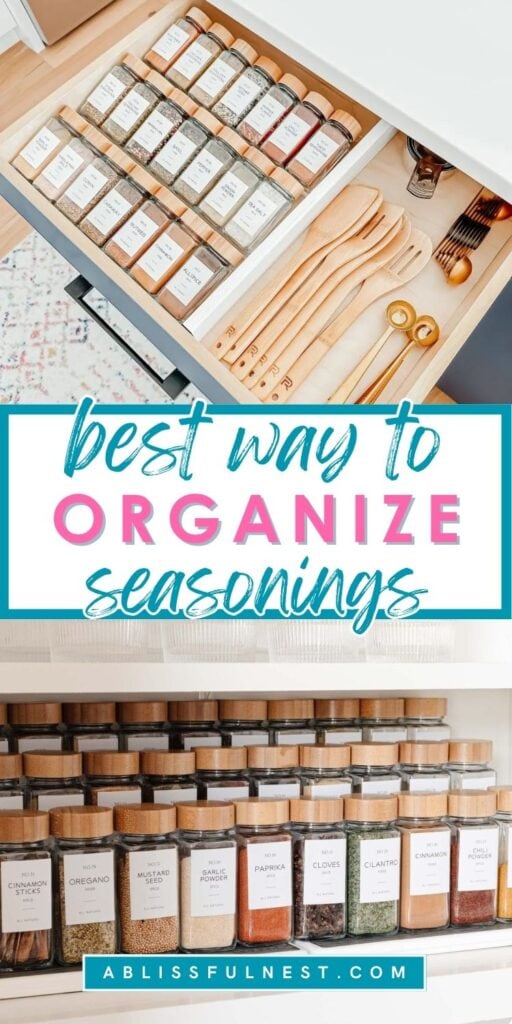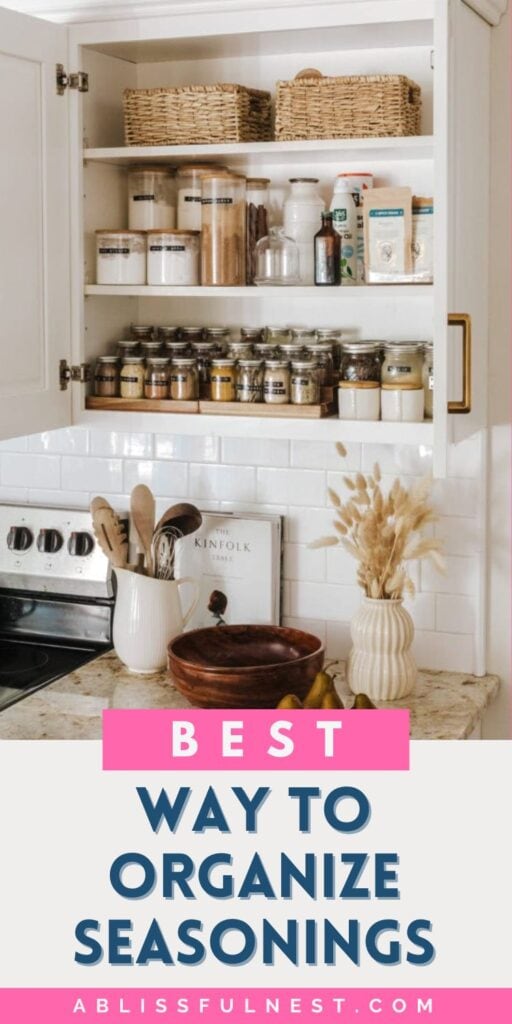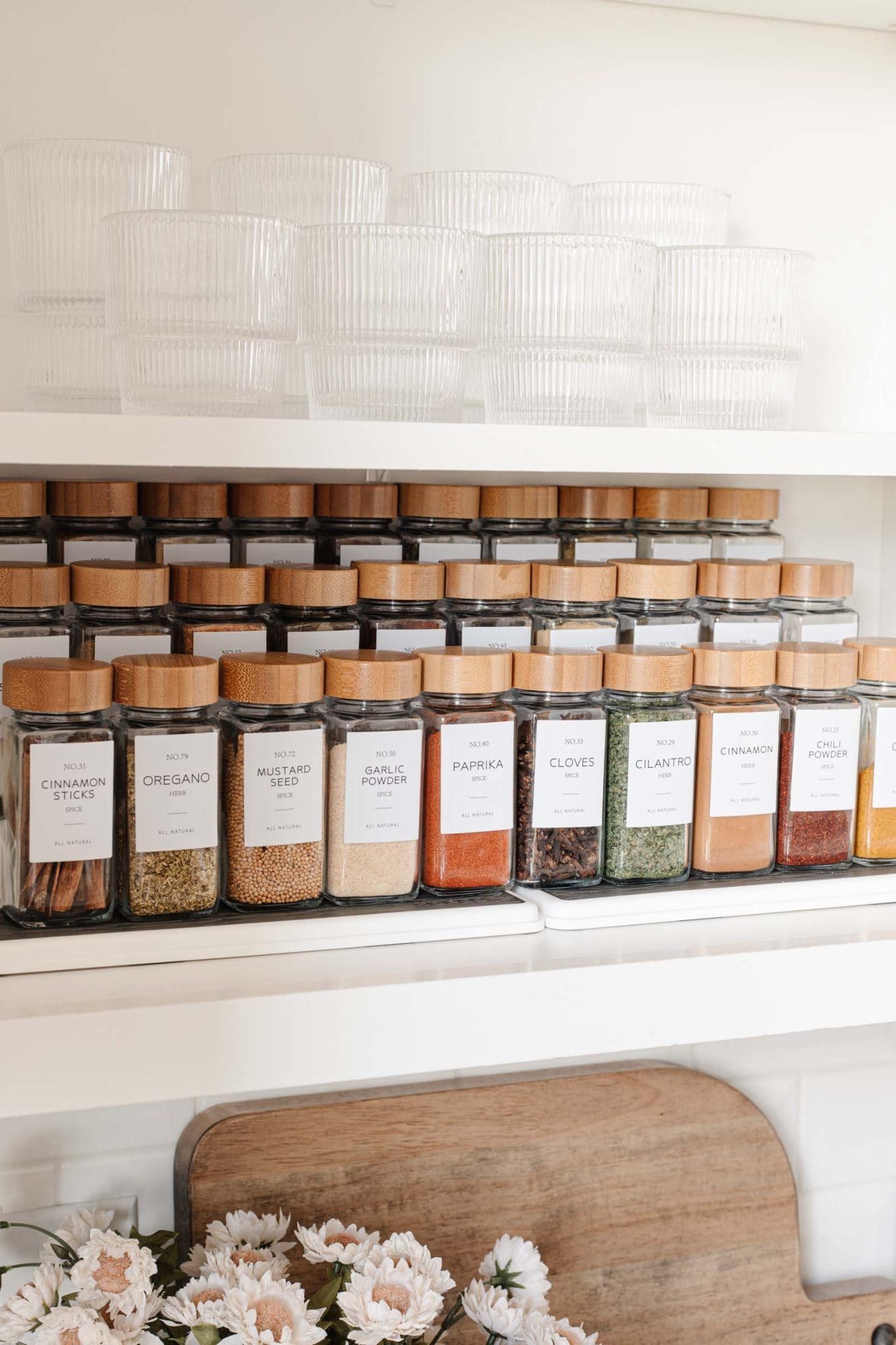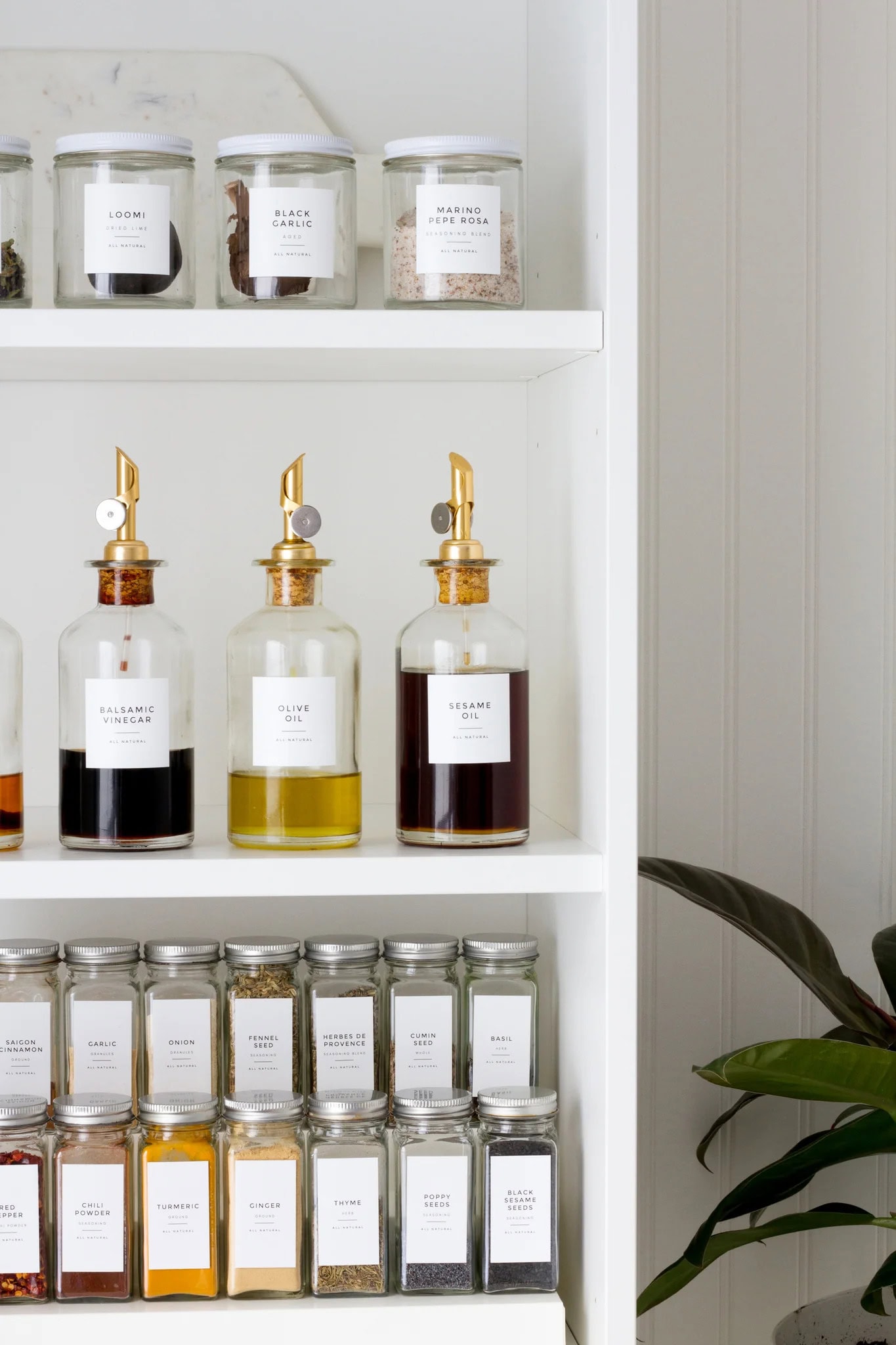If you’ve ever wondered about the best way to organize seasonings, it probably means you’ve lost time hunting through cluttered jars and mismatched labels.
When spices roll, spill, or go missing, it’s a real frustration that many home organization ideas fail to address properly.
Many of us toss jars into drawers or shelves without a system, hoping to remember where the cumin or cinnamon ended up last time.
Over time, expired seasonings take up space, and you end up rebuying ones you already own but can’t find in the mess.
Drawer organizers might help, but if you don’t first sort and label things clearly, the clutter usually creeps right back in.
If your spice setup doesn’t fit your cooking habits, it’s easy to fall behind and forget what you use each week.
Some people line jars on counters, but that often leads to visual clutter or jars falling behind other kitchen tools and ingredients.
This post may contain affiliate links. As an Amazon Associate and a participant in other affiliate programs, I earn a commission on qualifying purchases at no additional cost to you.
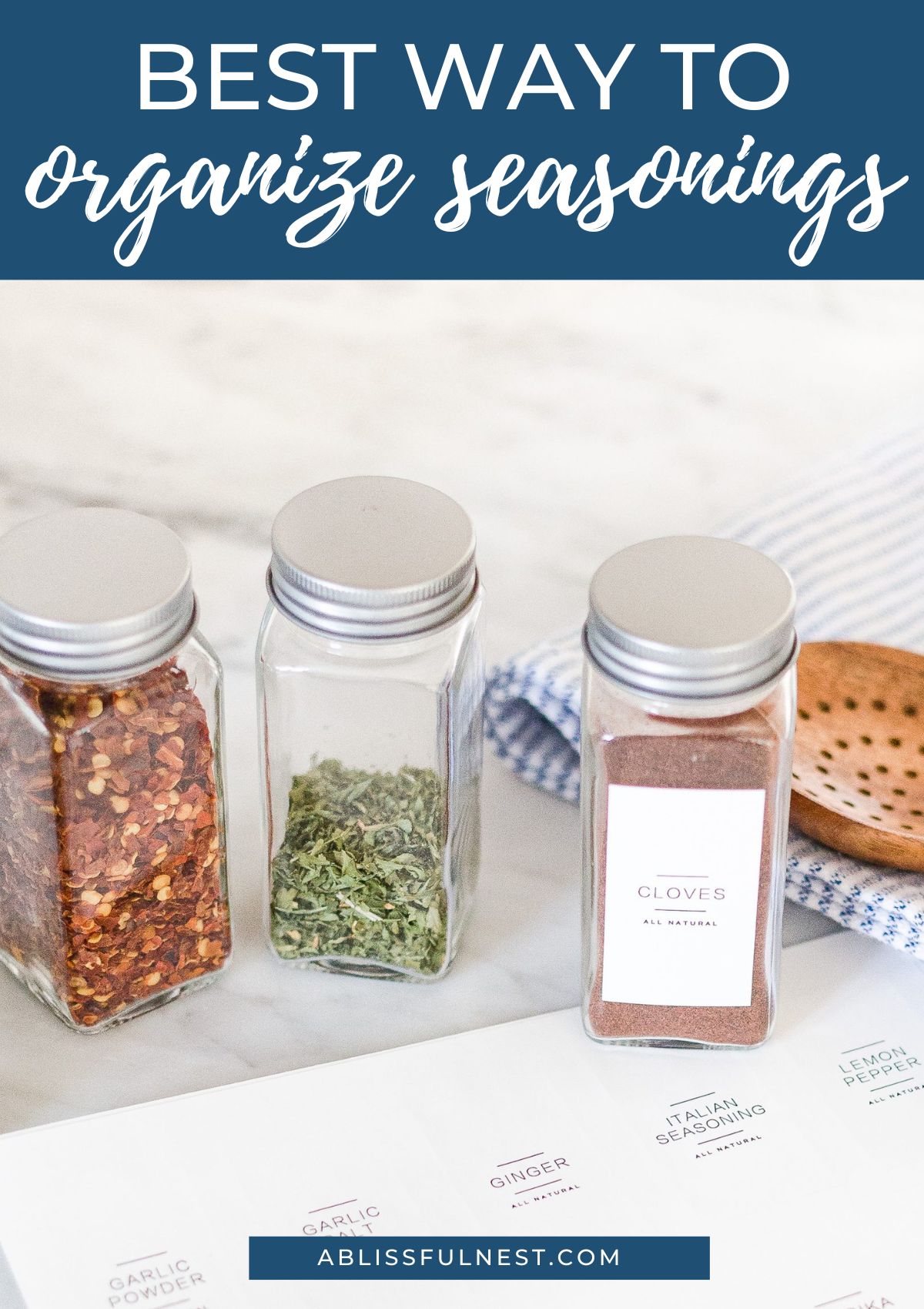
There’s nothing more frustrating than trying a new recipe only to realize you have three jars of paprika and no oregano.
The solution isn’t buying a fancy rack but creating a system that fits your space and makes daily cooking easier.
When you find a setup that keeps everything visible and accessible, you will enjoy cooking and stop dreading spice cabinet chaos.
Why You Should Organize Seasonings
Seasonings are used in nearly every meal, so a mess of jars and bags only adds stress during busy kitchen moments.
A cluttered spice area makes it harder to enjoy cooking because you waste time hunting down ingredients that should be easy to reach.
Learning how to organize a spice cabinet can prevent spices from getting misplaced without clear labels or a set spot, which often leads to duplicate purchases and unnecessary food waste over time.
It’s easy to forget what you already have, and even easier to overlook expiration dates when things are shoved in the back.
Spilled spices and torn packets can also attract bugs or create sticky messes in your cabinets and drawers.
A well-organized spice setup saves time, helps you meal prep faster, and supports better grocery planning when you can see what’s missing.
You’ll also use more of your spice collection because it’s easier to grab what you need and try new combinations.
Clear systems make it simple for others in your household to help with cooking without asking where everything is.
When spices are organized, your kitchen feels calmer and more functional, especially during weeknight dinners or holiday baking sprees.
Even small kitchens benefit from better spice storage, making your whole space feel more efficient without needing major renovations.
More Kitchen Organization Ideas + Inspiration
How To Sort Your Seasonings Before Organizing
Before you can organize anything, it helps to pull everything out and see what’s hiding in your cabinets and drawers, one of those brilliant kitchen organization hacks that immediately gives you a clearer view of what you’re working with.
Sorting spices gives you a fresh start and helps you avoid wasting time arranging old or no longer useful ingredients.
Group seasonings by category, such as baking, savory cooking, blends, or global cuisines, so you can find what you need faster when cooking.
If you use certain spices daily, create a separate pile for those so they stay front and center in your final setup.
Check every container for expiration dates and get rid of anything that smells stale or lost its flavor over time.
Consolidate duplicates into one jar when possible and toss anything that’s beyond saving or clearly labeled wrong from past use.
Use a notepad or phone list to track what you need to replace so you don’t forget during your next store run.
This sorting step also helps you realize which spices you use often and which ones can be stored further out of reach with smarter spice storage ideas in mind.
Would you like to save this post?
Lay everything on a clean towel or tray so you can clearly see what your spice inventory actually looks like now.
Once you’ve sorted and cleaned, you’re ready to create a system that saves space and supports your daily cooking habits.
Essential Items To Organize Seasonings
The right tools can make all the difference in how long your organization’s system lasts and how often you stick to using it.
Here are a few items that support better spice storage and help keep everything neat without taking up too much space.
Tap Photos To Shop
How To Keep Your Seasonings Fresh Longer
Freshness matters more than you think when it comes to flavor, and even the best organization will not help if your seasonings are stale because this is where organizing and decluttering tips really come into play.
Store spices in cool, dry spots away from direct heat, like upper cabinets, instead of near the oven or stovetop.
Too much humidity can cause clumping or mold, especially in powders like garlic, onion, or cinnamon.
Transfer seasonings from store packaging to airtight containers that seal properly and prevent air from breaking down the flavor.
Choose glass jars when possible, since they don’t absorb oils or odors like plastic might over time.
Avoid clear containers near direct sunlight, which can fade colors and reduce the shelf life of dried herbs.
Write the purchase or refill date on the jar bottom or lid so you know when it’s time to replace older stock.
Buy in smaller quantities for less-used spices so they stay fresher and don’t sit untouched for years in the back of your shelf.
Keep dried herbs separate from strong spices like curry or cumin that tend to share their scent with everything nearby.
Smell and taste test older spices a few times a year to make sure they still bring the flavor you want in meals.
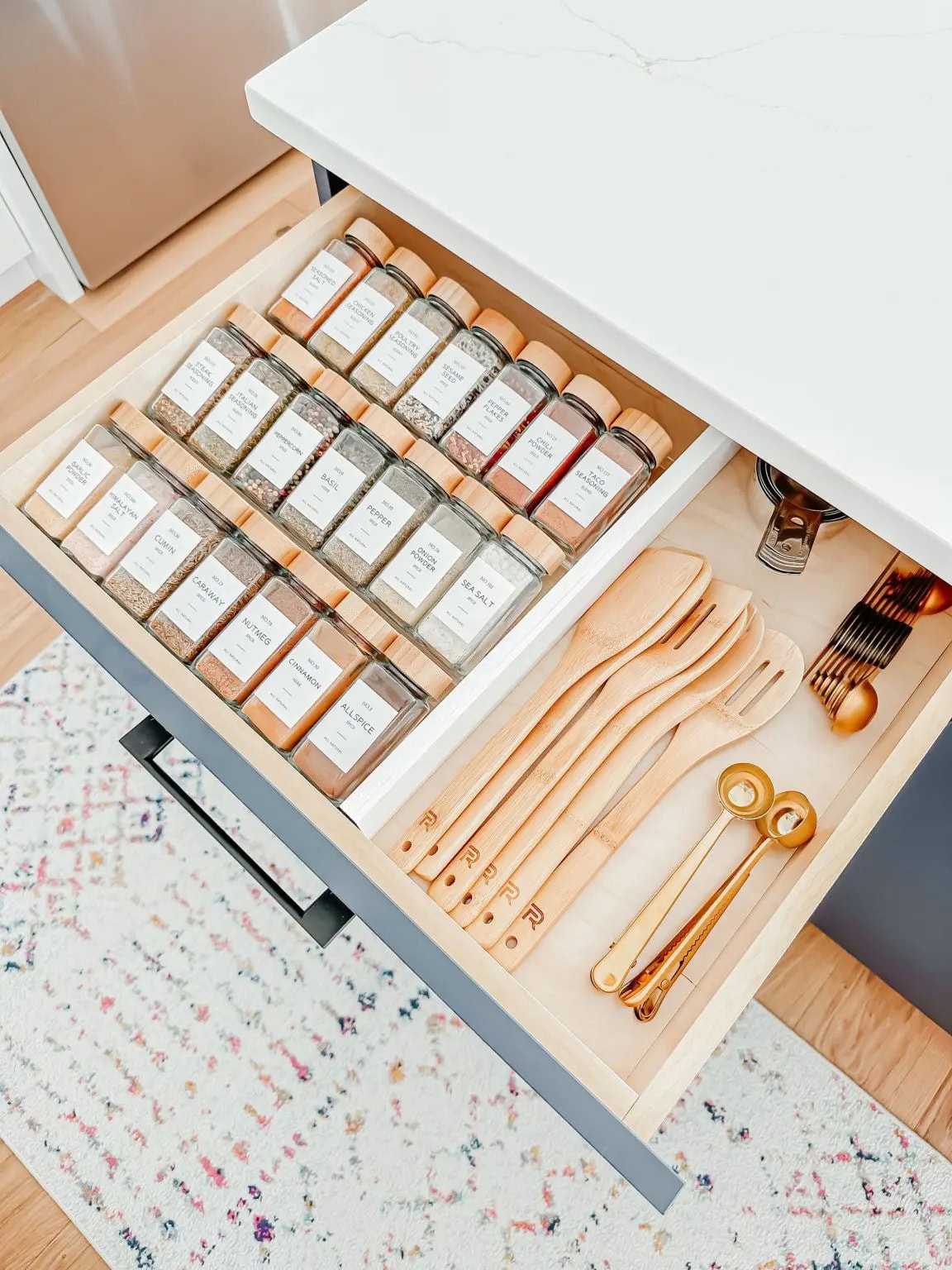
Easy Tips To Maintain Your Organized Seasonings
Once your spice setup feels complete, keeping it tidy just takes a few minutes each week and some good habits anyone can follow.
Here are some simple ways to keep things running smoothly without needing to reorganize again every few months.
- Keep it visible – Avoid stacking or stuffing jars into dark corners where they’re easy to forget and harder to reach.
- Refill on schedule – Check spice levels during your grocery list routine and refill jars before they run empty.
- Wipe shelves weekly – Dust and crumbs build up fast, so wipe surfaces when you clean the counters.
- Rotate for freshness – Move older jars to the front so they’re used first and don’t get forgotten in the back.
- Label new spices – Don’t forget to tag new jars when refilling so you never lose track of what’s inside.
- Limit duplicates – Stick to one jar per spice unless you’re storing a backup in a different spot, like the pantry.
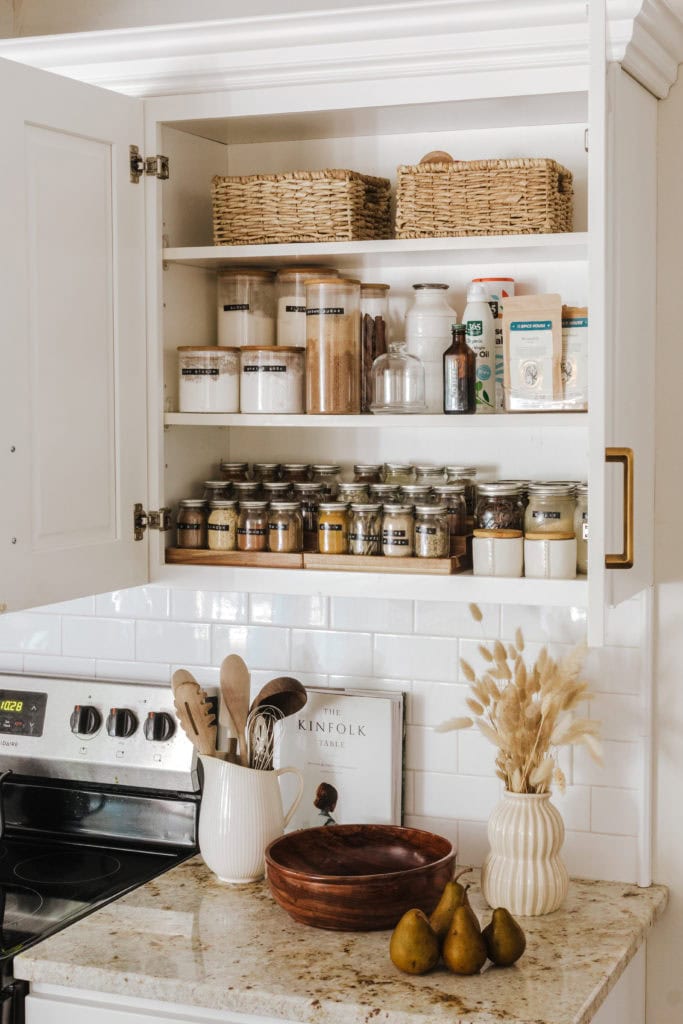
Frequently Asked Questions
Review your spices every three to four months to check freshness and make sure your system still fits your cooking habits. This seasonal reset prevents clutter from building up and keeps everything in order, so you’re not wasting time during meal prep.
Use airtight glass jars with wide openings to preserve freshness, avoid odor transfer, and make scooping or refilling much easier. Clear containers help you see contents quickly, but store them away from sunlight to protect the color and flavor from fading.
Keep most dried spices in a cool, dry cabinet instead of the fridge to prevent moisture and clumping inside the jars. Freezing is unnecessary and may affect texture over time, especially for herbs better stored at room temperature away from heat.
Check for faded color, weak scent, or clumping, which usually means the spice has lost its potency and should be replaced. Expired spices won’t make you sick, but they will add less flavor, so test them occasionally by smell or a small taste.
Use vertical racks, magnetic tins, or drawer inserts to save space while still keeping your spices labeled, visible, and easy to reach. Group them by type or frequency of use so your most-used jars stay accessible without crowding your small prep area.
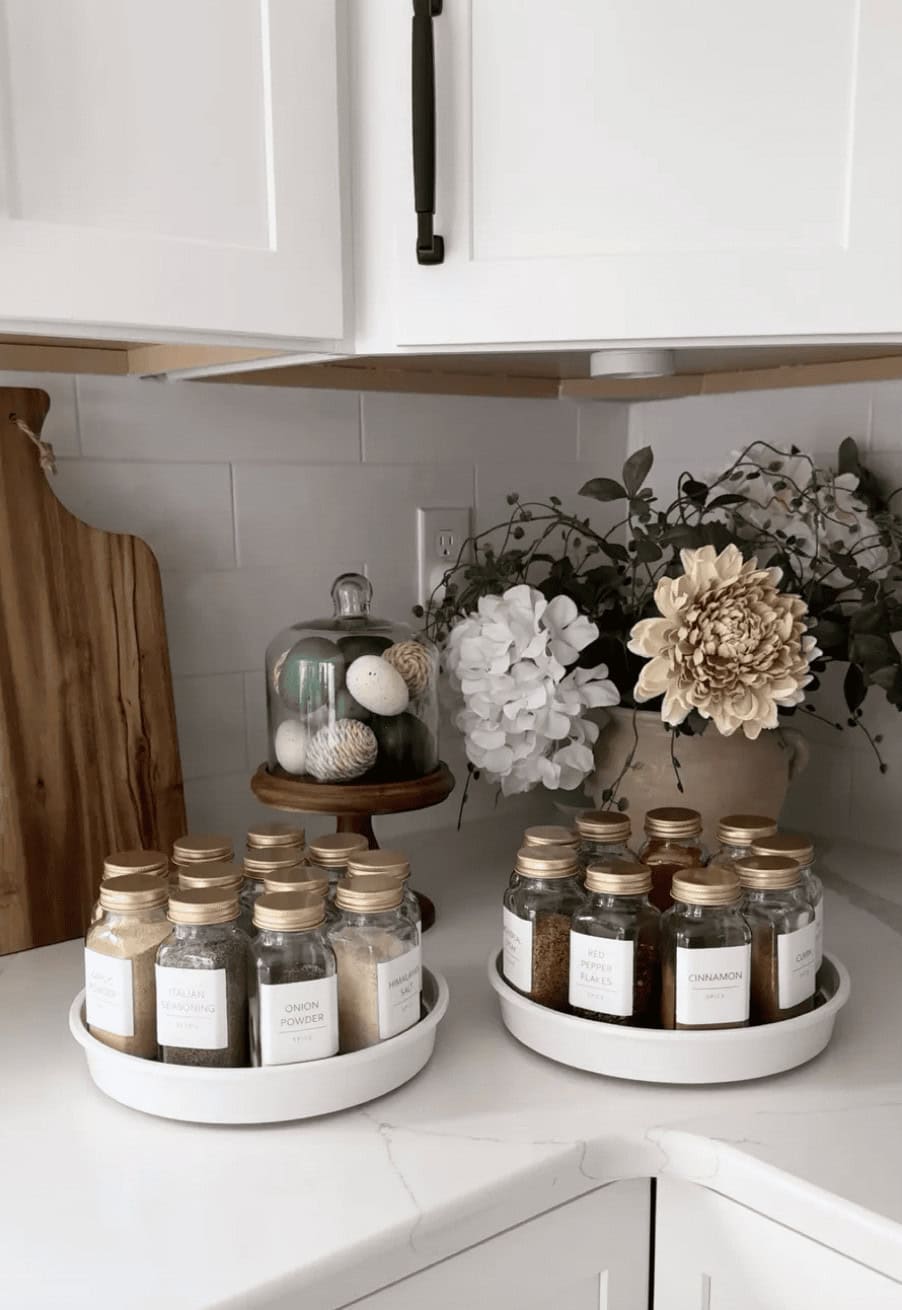
Spice clutter is one of those daily frustrations that sneak up over time and suddenly feel too overwhelming to deal with. One of the easy ways to declutter your home is by tackling small trouble spots like this first.
Finding the best way to organize seasonings makes every meal feel smoother, especially when you’re rushing to get dinner on the table.
You will stop rebuying what you already own and start using ingredients you forgot you had in the back of the cabinet.
A clear system not only helps you cook faster, but also encourages you to experiment more with new flavors.
With the right setup and regular upkeep, your seasoning shelf becomes a reliable part of your kitchen instead of a forgotten mess.


